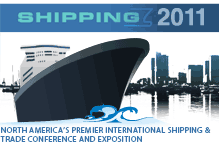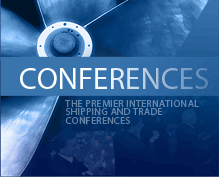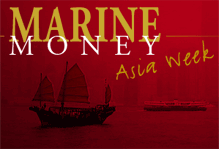
SHIP FINANCE IN NORWAY – The Year in Review
By Nicolai Heidenreich
A little over a year has gone since our Ship Finance Forum Norway in April last year. Plenty has happened not only in Norway but in the rest of the world as well. Nor-Shipping is soon upon us and we are very happy to offer the many domestic and international shipping colleagues that will be in Oslo that week the chance to attend this year’s Marine Money Oslo Ship Finance Forum.
It has been a very active year. How will it affect ship finance in Oslo? Continue Reading
Tanker IPOs: The Stelmar and Genmar Environment
By Urs M. Dür
This year has been a disastrous year for US Initial Public Offerings (IPO) and, while not yet disastrous at time of writing, the US stock market has not fared much sweeter. In the spectre of this, tanker shares have remained strong and in recent weeks have begun to flourish again. Stelmar’s IPO has been quite successful so far and there are other tanker IPO’s in the pipeline, one being General Maritime but others are thought to be close behind.
Do tanker shares and tanker IPO’s offer something unique to today’s investor? Yes, in some respects; namely sound earnings.
However, not to take away from the value that tanker shares currently provide, earnings are not unique to shipping (for sure!) and public shipping companies have found it difficult to be valued basis earnings. In this article we take a look at the IPO market and the tanker peer group to illustrate the environment. Continue Reading
IN RESPONSE: RESIDUAL VALUE REVISITED
By Sydney P. Levine, of Shipping Intelligence, Inc.
In “Are Tankers A Compelling Investment, Even In This Market?” (Marine Money, March 2001) Urs M. Dur put his finger squarely on a weakness in this kind of IRR analysis. He wrote “Residual [value] is the biggest gamble and predicting the market perfectly is folly”. That’s right; it is impossible to predict residual values precisely, but values must still be estimated and they may have enormous impact on calculated IRRs. In the three scenarios of the article the proposed residual values represent about 36% of the gross cash receipts. And because the project is only 3 years long that 36% has a sizable effect on IRR that is only minimally lessened by the discounting value of time. More than one cynical deal-maker has allegedly been heard to say “let me choose the residual value and I’ll give you whatever IRR you need”. Continue Reading
General Maritime: Going Public
By Urs M. Dür
Leave it to tankers to be different: The US stock markets have not had the best year and while, IPOs are rare these days, tanker shares are near their peaks. The consensus amongst analysts is that the tanker market has promise while the global economy is showing weakness. Relative to earnings, even when one considers their cyclicality, they appear inexpensive. So, the proverbial “window” is open for tanker IPOs.
With everybody else, Marine Money believes that the New York based General Maritime Ship Holding IPO (7million shares in a $15 – $19 range) – with a modern 15 Aframax and 5 Suezmax fleet – will price in the next 30 days. So there are really two ‘questions’ which need to be answered: Will it get done and at what price? Continue Reading
From the Editor: Maritime Economics, Chapter Six
“For the ordinary investor, the tramp company remains a form of investment to be avoided. It is a very special business and at its best financed and managed by those who are versed in its difficulties.”
- A.W. Kirkaldie, British Shipping, 1913
Thus is the opening quote of Chapter Six in “Maritime Economics” by Martin Stopford, currently of H. Clarkson & Co. Stopford’s book is the pre-eminent book in Maritime Economics-there are not too many other texts out there that cover the macro and micro of the maritime economic arena so well. Continue Reading
Fighting Over the First International Kids
Last week, the main interested parties in the bonds issued by First International filed two complaints in the Southern District of New York. Healy and Baillie filed the first complaint on behalf of the shareholders (Tom Steckmest) and counsel for trustee USBank, on behalf of the bondholders, filed the second complaint. Both complaints are seeking the same remedy; control of six product tankers secured by the First International bonds. So far, the courts have not given any feedback on the dispute. Continue Reading
FREIGHT SWAPS COMING OF AGE
By Lambros Papaeconomou
Freight swaps, also known as freight derivatives, present a unique opportunity for commercial & investment banks, commodity pools, hedge funds & trading houses to leverage their expertise in futures & derivatives trading and capitalize on an emerging and fast developing market. Freight swaps include all freight futures traded on regulated exchanges and all forward freight agreements – also known as FFA’s – traded over the counter.
Freight swaps were first introduced in 1985 when the Baltic International Freight Futures Exchange commenced the trading of BIFFEX, a dry cargo freight futures settled against BFI (Baltic Freight Index) a benchmark freight index published daily by the Baltic Exchange. At its peak in May 1988 a total of 1,758 lots were traded in a single day representing a total contract value in excess of $25 million. The total contract value traded the same year was approximately $1.5 billion. Continue Reading
The Crude Tanker Market: What happened?
By Tom Weibell, Projects and Ship Finance with Dietze & Associates, L.L.C.
This article aims to explain what happened to the crude tanker market1 in the year 2000 and what we can look forward to in the next four years, always keeping in mind only a fool would believe the tanker market is predictable.
A Brief Historical Summary
December of 1999: Aframax owners were willing to fix 1 year at 12,000 USD per day. Suezmax new buildings were making 15,000 USD per day, roughly the same as their 25-year-older sisters. The difference in earnings between old and new was mainly due to the higher fuel consumption of the older ships. Brand new VLCC’s with a delivered cost of about 85 million USD were fixing five years at break-even of capital cost around 30,000 USD per day leaving a return on equity close to or below 10-year treasuries. The VLCC spot rates were below 20,000 USD per day. Not a good scenario for investors. Continue Reading
“CONVERTS” to SHIPPING – Funding Redemption
Part 1 of 2
By Geoff Uttmark
The market for convertible securities is growing. Once mainly the preserve of institutions like mutual funds, pension funds and high net worth private investors, instruments in the form of convertible bonds, debentures and preferred stock are now developing a broader investor base. Convertible bonds and convertible preferred shares now form the largest proportion of the international equity-linked securities market. This is a market with an estimated $ 400 billion capitalization and some 3,000 individual issues and one in which, in our view, shipping is surprisingly under-represented given the similarity of desirable attributes shared by attractive “converts” and attractive shipping deals. In 1982 India’s Great Eastern Shipping Company issued $10 m of convertible debentures (MM, Volume 17, Number 2). In 1992 Taiwan’s Sincere Navigation Corp. issued $50 m of convertible Euro-bonds, and in 1997 US ship builder Halter Marine (since acquired to create Friede Goldman Halter, symbol FGH) issued $185 m of 4.5% convertible bonds due in 2004. Other issues are out there, but we think there is room for many more. Indeed, convertible debt appears to Marine Money to make a strong case as the instrument of choice in many shipping capital structures. And this instrument that is particularly appropriate to shipping can be counted on to be of increasingly greater interest to investors generally, should global equity markets continue to encounter rough seas as they have in the past month. Continue Reading
Superfast Ferries: Growing at Superfast Pace
By Kevin Oates
Prologue
Superfast Ferries Maritime SA (hereinafter “Superfast”) brought to the Adriatic ferry business a new philosophy. The elements of success were speed, comfort and safety at affordable prices. To achieve these aims newbuild fast ferries were constructed of novel design. From the onset of the first two ferries linking Patras in Greece to Ancona in Italy in 1995 success was rapid. The ferries, which had been on these routes for decades, became antiquated and the whole structure of the industry changed. Superfast rapidly won market share and the concept had taken hold. In 1998 two further vessels were delivered and a second route linking Patras, Igoumenitsa and Bari was inaugurated. Again success was rapid.
A subsequent investment by Attica Enterprises SA (hereinafter “Attica”), the stock listed owning company of Superfast, has been to acquire 50% of Strintzis Lines, a major competitor on the Adriatic routes and a major player in Greek domestic routes. And Superfast has a huge investment programme of 10 more ferries with an option for two more. Continue Reading







